The Breakup of the Woodlands Estate
Regardless of their hard work and enterprise, the big landowners faced bankruptcy by the 1890s. Their huge loans, the cost of development, coupled with low returns for their produce, saw the Bank of New Zealand foreclose on hundreds of thousands of acres of agricultural land which lay in various stages of development. By 1898 an amendment to the Lands for Settlement Act had been passed to break up the large estates of the Waikato into smaller blocks. The government of the day sought to place more people on the land, in the hope that individual ownership and more intensive farming methods would restore the productivity and competitiveness of the nation’s farming sector.
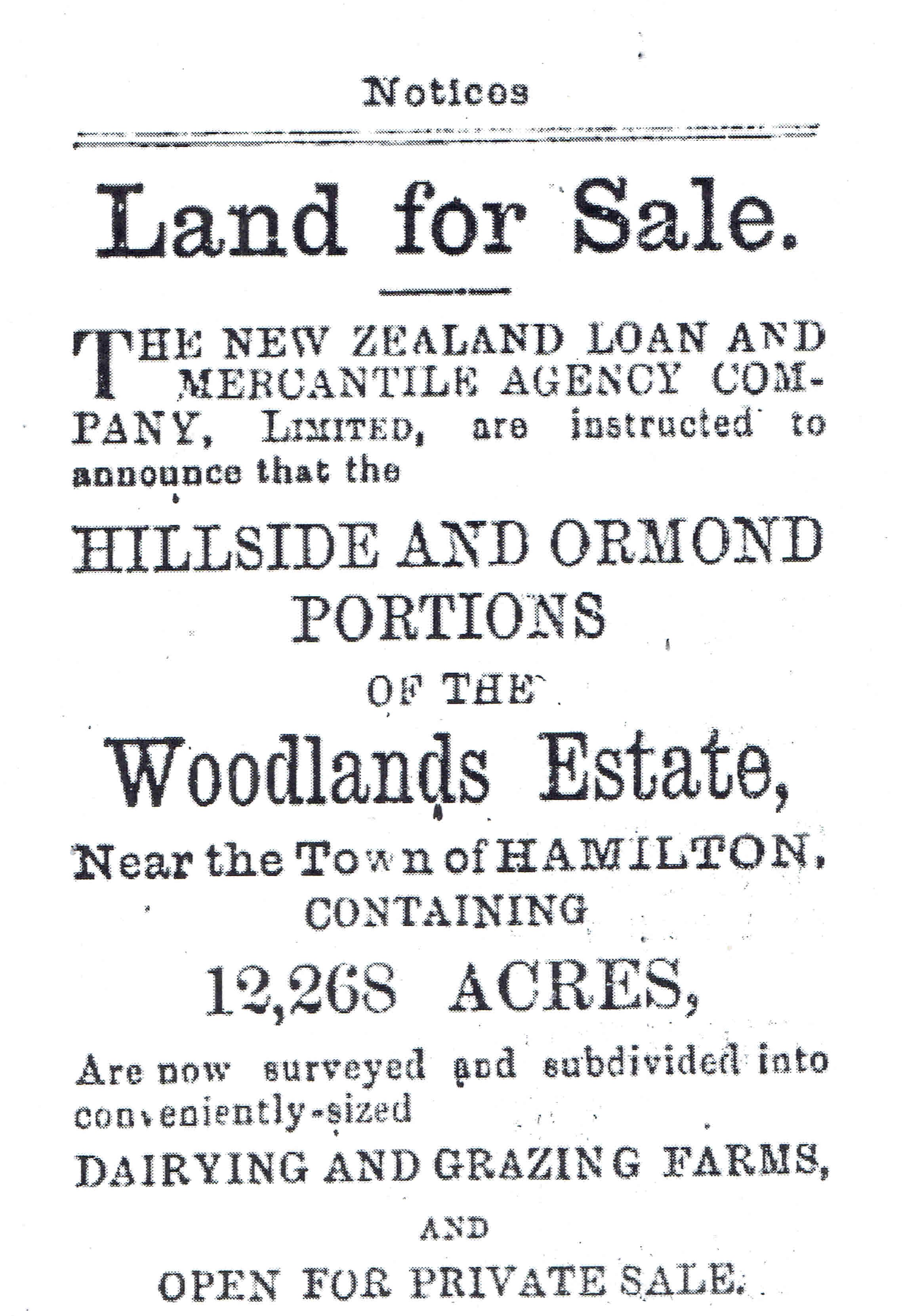
1880s, the Woodlands Estate covered an area of approximately 98,000 acres
1903,a ballot was held to sell sections in the Hillside and Ormond sub-division - 12,268 acres of the Woodlands Estate.
1913 a reporter from the Waikato Argus visited Hillside. By then the second wave of new settlers were beginning to develop the very raw peatlands in earnest.
1917, the name Hillside is changed to Puketaha, meaning, ‘side of hill’. It referred to the land which slopes north and east from Crosby’s Hill. (2022: Crosby Rd/Porritt Stadium area)
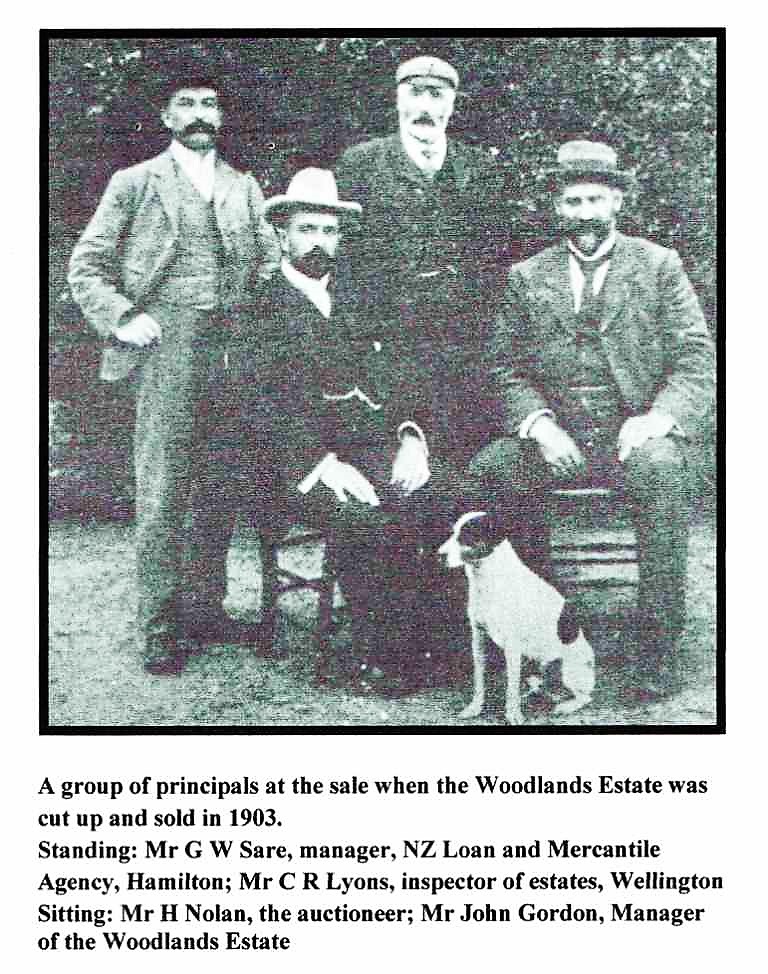
A RISING DISTRICT - THE HILLSIDE SUB-DIVISION – Later known as Puketaha
Waikato Argus: 6th August 1913: (Note: I have added the images to the original newspaper article)
It is just ten years ago since the Hillside subdivision of the Woodlands Estate was opened for settlement by ballot by the New Zealand Loan and Mercantile Company.
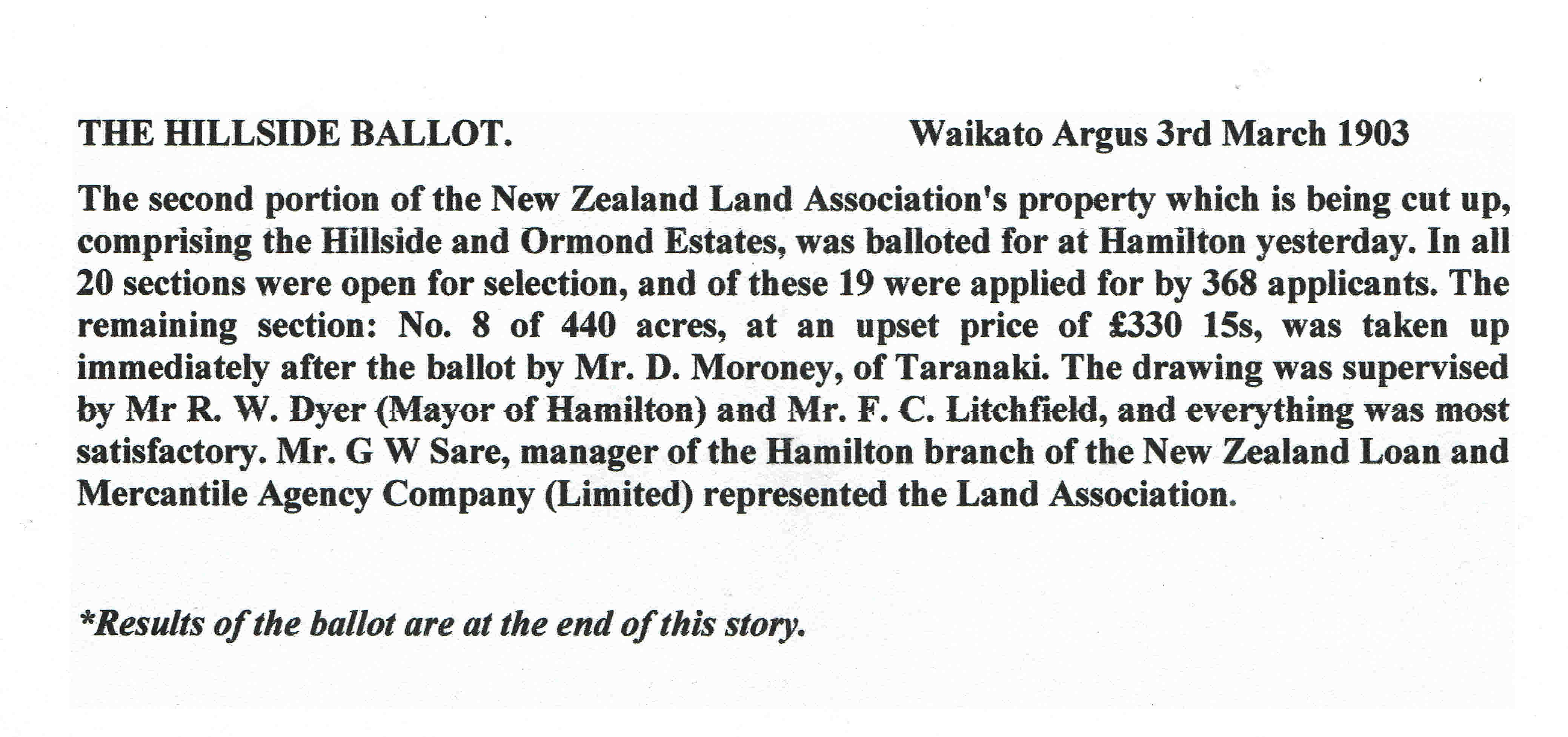
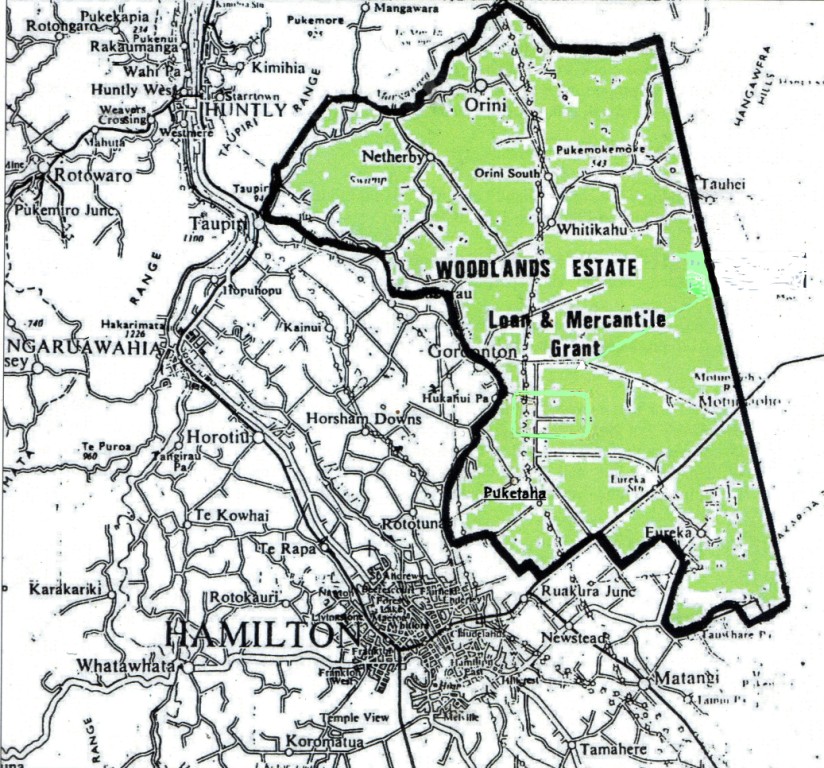
There was not a great rush for the land, and it is safe to say that were the ballot taking place tomorrow there would be a different tale to tell. Of the original drawers of sections only one remains, Mr F. R. Seddon, the other blocks having passed into the hands of southerners mostly, who have done great work in reclaiming what was at that time a huge |swamp, wet and scrub covered, and converting it into beautiful dairy country, which has been sold up to .£30 an acre. The settlers are loud in their praises of the work accomplished by the local drainage board, and point with pardonable pride to spots where, four years ago, it was impossible for a bullock to cross without getting bogged, and stacks of hay are now to be found and windmills erected to pump water for stock. Such a transformation in so short a time is almost incredible. The question of fall was at the outset thought to be the bugbear, but this has been easily overcome, and the country is coming in with an ease and rapidity that would gladden the heart of a stone image.
Those who remember the district a decade ago would scarcely credit the development that has been made, and as I evidence of what can be done by energy and industry this district would compare very favourably with any other part of Waikato. It was with the object of noting the progress made that a representative of this journal recently embarked on a trip to Hillside, and a few observations on the journey may prove of interest to our agricultural friends. The first holding within the Hillside Settlement is that of Mr Lloyd, containing about 200 acres. Mr Lloyd has only been on the section two or three years; but during that short space of time he has converted a wet, scrub and rush-covered area into a most desirable block. Almost every inch has been brought under the plough, and the excellent condition of the land has just attracted a buyer; but his name, so far, has not been disclosed.
Next door is Bushy Park, owned by Mr Norman Taylor and generally considered to be the pick of the Hillside
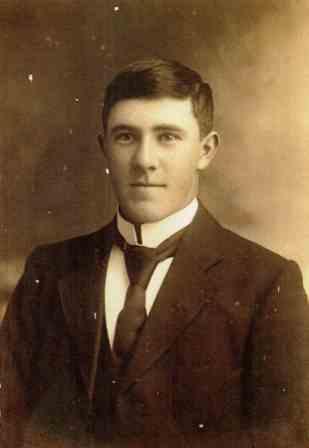
subdivision. Here the company's fattening paddocks were situated, and that Mr Taylor was right in his choice has been proved times out of number by the quality of the stock turned off. During the last couple of years he has considerably extended the acreage under the plough, and the result is a tribute to his energy and good management Bushy Park lies on both sides of the road—a fine tract of country, extending away out towards the Waverley Islands. Mr Taylor is reported to have disposed of one of the back sections; but if so the new owner has not put in an appearance. Mr Taylor at the present time milks 100 cows; but as the Gordonton creamery claims his attention Hillside interest in his milking operations is not as keen as it would otherwise be. Adjoining this most desirable property is a large block owned by Mr James Taylor, of Cambridge, which the settlers would like to see cut up and closely settled. Mr Taylor, however, has expressed his intention of milking 100 cows this season, and next to cutting up, this is a step calculated to provoke general satisfaction in the neighbourhood. Mr Taylor already handles 100 cows at the Hukanui end; but, as we previously stated, local interest is solely centered in the home creamery. The block is at present under the capable management of Mr McLeod.

Across the road is the fine property of Mr F. R. Seddon, stretching away in the distance. Mr Seddon devotes his attention purely to stock raising and fattening, and with the uncertainty of the labour market has so far refrained from embarking in the dairy industry. Like his father before him he is a noted breeder of Lincolns, and his name is well-known in connection with the show ring. It is quite within the range of possibility that Mr Seddon will subdivide in the near future. Very little of the land has been actually broken in, but the excellent results obtained from topdressing the natural pasture stamp it as ideal dairying country, which would be eagerly snapped up at remunerative prices. Across the road is what was originally Mr J. W. Chapman’s property. This has been subdivided and settled upon, the owner retaining a sufficient area for the purpose of milking 60 cows. On the left hand side of the road between the holdings of Messrs Seddon and Chapman is that of Mr Speedy, containing 100 acres. The owner has not been long in putting a new face upon the land, and there are visible signs of his industry on all sides. Next door is to be found 100 acres owned by Mr Ferryman, who has also made good use of his lime, and his land is responding generously to the treatment. Mr E. Thomas, a Wairarapa settler, is quartered alongside, the proud possessor of 146 acres of land that he considers as good as anything in the country. Clumps of titree, which have been preserved for shelter, indicate what the place was like when he settled there six years ago, but gradually the whole block is being brought in under the plough, and the results, as in the other instances, are most gratifying. Mr Thomas has an up-to-date milking shed, and will handle about 40 cows this year. A good deal of planting is being done for shelter and ornamental purposes, and the trees, even now, tend to give the place a homely, settled appearance.
On the same side of the road is the farm of Mr M. Finlay, containing 900 acres, and capable of carrying no end of
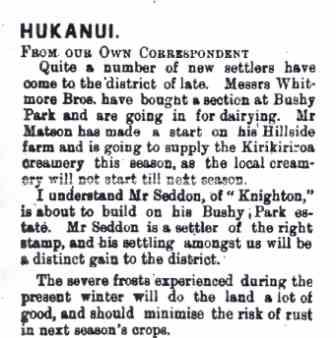
stock. For a start Mr Finlay will contribute the product of 50 cows to the local creamery. A great deal of work is required on this section, but the owner has a fine family of boys, all of the right stamp to make desirable settlers, and it is expected that a transformation will have been effected in a year or two. The adjoining block, which is of considerable extent, is owned by Mr J. M. McCarthy; but as the owner has disposed of his dairy herd, and does not intend to milk this year, his neighbours would gladly welcome any close settlement scheme which would have the effect of converting this desirable property into milking areas. Harking back a few miles we retrace our steps to the farm of Mr G. H. Gilling, an ex-Taranaki settler, who has only been here a couple of years. He occupies a neat little section of 156 acres, which comes under the heading of “one of the finest little farms in the subdivision.” With the exception of about 50 acres, the whole is under grass, and carrying a nice bit of feed. Mr Gilling intends to supply the milk of 40 cows this year, and has just completed the necessary buildings for dairying under modern methods. He is very partial to the Holstein breed, and intends to work up to a purebred herd for creamery purposes. What appeals to him most are their wonderful constitutions and good milking qualities. Mr Gilling has a magnificent bull, Cliffside Dairy Mentor, bred by Mr Lovelock, of Palmerston North, which has made a name for himself at all the West Coast shows, and from Hawke's Bay right up through the Manawatu to Wanganui. He has also been successful at the Auckland, Waikato and Waikato Central Shows, and has only been unplaced once—at Palmerston as a yearling. Mr Gilling has some nice young heifers and bulls on the farm, and says there is a good demand for the latter. His own demand for the former is as yet unsatisfied. The Holstein is not so well-known in Waikato as in Taranaki, where it is the favourite breed for milking purposes. If Mr Gilling’s claims are sound, and we have no reason to doubt them, the black and white breed will quickly attract the attention of Waikato dairymen. The next holding in the direction of Hamilton is that of Mr O’Neill, containing about 250 acres of beautiful land, portion of which is in the rough. Mr O'Neill intends to contribute his quota to the creamery, and his holding will enable him to deal with a fair sized herd. Between there and the main road is the pretty little farm of 300 or 400 acres, formally owned by Mr J. Parlane, and now in the possession of Mr Rickard, who proposes milking 100 cows this season, so that the newcomer is going to prove a valuable settler. On the whole the future looks particularly bright for the district.
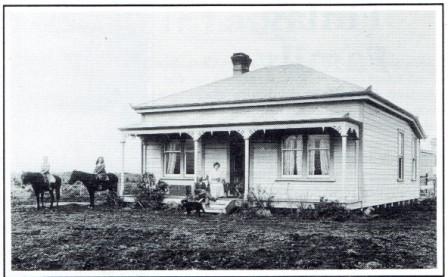
A new creamery has been erected on Mr Gilling’s property, and this will save ’the majority of the settlers a jaunt of several miles, which is a very great consideration. A guarantee of 450 cows has been given; but the probability is that the number will be greater. An excellent supply of water is obtained from an artesian bore, the supply being struck at 250 feet. Mr S. Clements, the local water diviner, indicated the spot, and the result has been most satisfactory. The creamery, which opened on Monday morning, is in charge of Mr A. H. Davis, representative of the New Zealand Dairy Association. The roads in the district are at present in very fair order; but, of course, the serious work of the year has not yet commenced, and in the absence of metal they are sure to cut up later on. However, a poll for a loan has just been carried, and these go-a-head farmers intend to have a main road ere long that will be second to nothing in Waikato. It is hoped to have a telephone service established by November, and this, besides bringing them into closer touch with the outside world, will prove of inestimable value from a business point of view. Steps are being taken to have a rural mail delivery established, and a movement in favour of having the name changed from Hillside to Bushy Park is reported. There is already a Hillside in the South, so it cannot be claimed by these settlers as a postal address, but provided Bushy Park is not already appropriated no difficulty should be encountered in the matter. The Hillside settlers appear to be men of the right class to carve out homes in the shortest possible time, and they have our best wishes for the future.
______________________________________________
Here is a list of the people who were successful with Hillside ballot on the 2nd March 1903
Section 1—123 acres; reserved.
Section 2—112 acres; reserved,
Section 3—133 acres, upset price £593 10s, 10 applicants—W. Chitty, Hamilton.
Section 4—155 acres, upset price £775, 50 applicants—W. H. Cook, Auckland.
Section 5 – 183 acres 2 roods £1036 15s, 24 applicants—F. A. Stevens, Hamilton.
Section 6—143 acres 2 roods, upset price £780 5s, 4 applicants—Ada M. Stevens.
Section 7—196 acres 2 roods; reserved.
Section 8— 440 acres, £835 5s; no applications.
Section 9—238 acres, upset price £952, 5 applicants—W. O. Snell, Hamilton.
Section 10—179 acres, upset price £716, 28 applicants—Geo. Edgecumbe, Frankton
Section 11—165 acres 3 roods, upset price £580 2s 6d, 36 applicants—E. Brookfield, Auckland.
Section 12—216 acres 1 rood, upset price £648 15s, 7 applicants Alice Chitty, Hamilton.
Section 13—686 acres 2 roods, upset price £89I, 20 applicants—W. H. Halt, Taranaki.
Section 14—507 acres; reserved.
Section 15—300 acres, upset price £2715, 43 applicants—J. Ryan, Thames.
Section 16 – 295 acres 3 roods 20 perches, upset price £1775 5s, 36 applicants—H. H. Howden, Hamilton.
Section 17—169 acres 3 roods 34 perches, upset price £983 15s 6d, 3 applicants—D. Moroney, Taranaki.
Section 18 - 162 acres 2 roods 34 perches, upset price £691 10s 6d, 8 applicants—T. M. Alexander, Auckland.
Section 19—209 acres, upset price £836, 3 applicants—D. Moroney, Taranaki.
Section 20—220 acres, upset price £1215, 23 applicants W. Sands, Remuera.
Section 21—155 acres, upset price £930, 26 applicants—J. Robertson.
Section 22—4104 acres, upset price £I600, 15 applicants—W. H. Hume, Hamilton.
Section 23—1362 acres, upset price £640, 2 applicants—C. O. Phair, Auckland.
Section 24—1503 acres, upset price £680, 2 applicants—C. O. Phair, Auckland.
